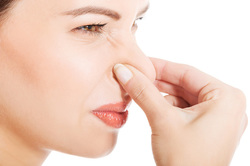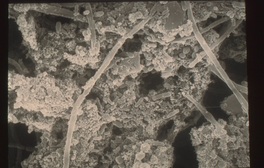The oxygen producing photosynthetic organisms found in water consist of eukaryote algae and prokaryote blue-green algae (also known as cyanobacteria). The green algae are complex organisms that range from single cells to larger plant-like kelp. In general, the green algae is beneficial in that it removes ammonia nitrogen from the water and produces vital oxygen used by other life forms.
There are other forms of eukarytoic algae: brown, yellow, and red. While not as common in freshwater as green algae, some of the other eukaryotic algae cause problems such as red algae (rhodophyta) that during blooms causes toxic red-tide in marine environments.
Most of our "algae" problems come from the prokarytoic blue-green algae. These organisms also known as cyanobacteria are able to fix nitrogen from the atmosphere or use nitrogen found in fertilizer runoff. What promotes blooms in most water bodies is high phosphate entering the system as this is usually the limiting nutrient. The cyanobacteria form blue green mats that rise to the surface during daylight hours. During bloom events the cyanobacteria cause pH swings where photosynthesis creates high pH during daylight hours and due to respiration of carbon dioxide during dark hours a drop in pH at night. While the green algae can do the same pH swing, they are usually not as likely to bloom unless sufficient nitrogen is present in addition to phosphate to create excessive growth.
During summer months, cyanobacteria are often a nuisance due to their production of odors and bad tastes from MIB and Geosmin. When conditions promote a bloom, cyanobacteria can produce compounds that are toxic to neurons, cell membranes, and liver cells. As a group these toxins are termed - cyanotoxins. Recent research has revealed in addition to acute toxicity, cyanotoxins can lead to chronic problems including a link to ALS (Lou Gehrig's Disease).



 RSS Feed
RSS Feed